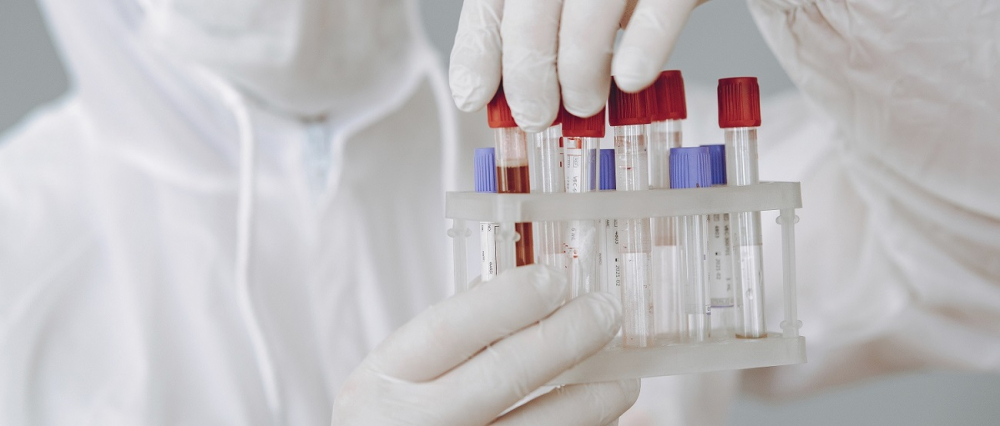
Content
Hepatitis C is a dangerous disease that affects the liver. The virus is carried by about 2% of the world's population. In many cases, the disease is asymptomatic. For this reason, patients seek medical help even when irreversible changes occur in their bodies.
When carrying a virus, it is important to protect yourself and others. An infected person may not be aware of the presence of the pathogen and be dangerous to others. However, with proper treatment and precautions, carriers of the hepatitis C virus do not pose a threat.
Ways of transmission of hepatitis C
Hepatitis C is transmitted from person to person as it is an anthroponotic disease. The one in whose body the virus is located is considered to be the carrier of the infection. The disease is transmitted in only one way - through the blood. At the same time, viral particles are also present in other biological fluids, but such a low amount is not enough for infection. Outside the human body, the virus is able to remain active for up to 4 days.
Through the blood
In most cases, the patients were infected by the parenteral route, i.e. with direct contact with the pathogen in the blood. One small drop is enough to transmit the virus. Infection usually occurs when the skin is damaged.
Typically, the virus is transmitted in the following cases:
- In case of joint injection of narcotic substances using one syringe. The hepatitis C virus inside the needle is able to remain active for up to 63 days;
- When visiting tattoo parlors, manicure studios, dental and beauty parlors. The cause of infection is violation of sanitary standards and the use of contaminated tools .;
- When working with body fluids, including blood. The virus in the blood that remains on cotton swabs remains active for up to 48 hours. Such infections are typical for medical personnel;
- With blood transfusion (in the period before the obligatory testing of donors for virus carriers).
Sexual route
Sexual transmission of the virus accounts for 4 to 6% of infections. You can become infected with hepatitis C through sexual contact in the following cases:
- In the presence of damage to the genital mucosa. Wounds and cracks begin to bleed if partners practice aggressive or anal sex;
- Sexual contact during menstruation;
- In the presence of genital warts and on the skin in the anogenital zone.
The more casual sexual intercourse, the higher the likelihood of infection. When it comes to oral sex, the hepatitis C virus can be transmitted through semen. However, this is possible under the following conditions:
- On the lips of the partner there are rashes caused by the herpes virus;
- The woman suffers from some kind of upper respiratory tract disease;
- There is damage in the woman's mouth.
Conclusion: with oral sex, transmission is possible if the skin or mucous membrane in contact with the penis is damaged.
From mother to child
The hepatitis C virus is transmitted from an infected mother to her child during fetal development or childbirth, i.e. vertical path. Since the fetus in the uterus is protected by the placenta, cases of intrauterine infection are rare (less than 5% of the total number of infected children). To minimize the likelihood of infection, experts insist on a caesarean section.
Before a child reaches the age of two, doctors find out if he is a virus carrier. During the first two years of life, the disease may either not be diagnosed or it may be diagnosed incorrectly.
Note that the hepatitis C virus can be transmitted from mother to baby during breastfeeding. There is no virus in milk, but infection is possible if wounds and cracks appear on the nipples of a nursing woman. In such cases, feeding should be suspended until the skin is completely healed.
Other modes of transmission of hepatitis C
Infection can be transmitted through poorly sterilized instruments used in dental offices or healthcare facilities. High risks of infection are among those who attend acupuncture sessions, since needles can be used after virus carriers.
In addition, the virus is transmitted from one family member to another if people use the same hygiene items (nail scissors, razors, toothbrushes, etc.). Virus particles remaining on such household items can be active for 4 days.
In addition, menstrual blood remaining on the bed linen that can be used by another person is dangerous.
Who is at risk
To find out who is at risk, see the table.
| Patient group | Description |
| Drug addicts | When injecting drugs, people neglect safety rules, which is why 67% of drug addicts are virus carriers |
| Blood and organ donor recipients; patients regularly undergoing invasive procedures | The risk of infection depends on the frequency of medical procedures performed. When compiling statistics, the number of invasive interventions for an individual over 12 months is taken into account. Particular attention is paid to patients who underwent blood transfusion (before 1988 abroad and until 1991 in the USSR). Precise diagnostic methods have not been used until this time, so there is a possibility of a long latent course of the disease. |
| Children born to infected women | The probability of transmission of the virus in an HIV-negative mother is 4-8%, and in an HIV-positive mother - 17-25% |
| Sexual partners of virus carriers | The likelihood of infection during vaginal sex is quite low - from 5 to 7%. People who are promiscuous or have anal sex are at increased risk. To minimize risks, experts recommend using condoms during every sexual contact. |
| HIV positive patients | The risk of contracting hepatitis in HIV-infected people is high, regardless of the mode of transmission of the pathogen |
| Intranasal drug users | People with weakened drugs of the body are at greater risk than those who are not addicted |
| Piercing and tattoo owners | According to research, piercing and tattoo lovers are more likely to carry the virus than other people. It should be noted that the risk of infection depends on the sterility of the instruments used by the master. If a salon employee uses disposable tools and gloves, and also disinfects work accessories and surfaces, then the likelihood of infection is minimal. |
In addition, the risk group includes:
- Persons who are in places of deprivation of liberty or who have served a term earlier;
- Patients undergoing hemodialysis;
- Health care workers (especially emergency and ambulance workers, blood banks, emergency surgery).
Experts recommend regularly taking tests for those who have already had hepatitis C. Also, special attention is paid to people with elevated levels of liver enzymes (especially for unknown reasons).
When hepatitis C infection is not at risk
Infected people often find themselves in social isolation, as others stop communicating with them after learning about their diagnosis. Such situations are associated with a low level of awareness, since a person is not contagious during normal communication.
At home
Infection is possible only if the skin of a family member is damaged. Using kitchen utensils or hugging does not result in transmission of the pathogen. Carriage of viruses is not a reason to avoid any human contact.
While a person infected with hepatitis C is in the house, it is necessary to thoroughly wash the dishes, use personal hygiene products, immediately disinfect and close the wounds on the skin.
By inheritance
It is widely believed that the virus can be passed from father to child, but this is erroneous. Infection is possible when a woman comes into contact with an infected man during conception or gestation. For this reason, both partners should undergo a full examination if they are planning a pregnancy. If the virus is detected in a woman or man, treatment is required.
By airborne droplets
The hepatitis C virus is not transmitted through saliva, tears, handshakes, nasal mucus. You can get infected during a kiss, but only if the patient has wounds in the mouth.
To date, no cases of airborne transmission of the hepatitis C virus have been reported.
Through insect bites
Mosquitoes and other insects are not carriers of hepatitis C. Once in the digestive tract of a mosquito, the virus dies. In addition, mosquitoes do not bite several people in a row and, when bitten, inject their saliva into the skin, and not someone else's blood.
Security measures
It is almost impossible to completely protect yourself from the risk of contracting hepatitis C. Nevertheless, effective preventive measures help to maintain health:
- Avoid visiting dental offices, beauty salons and medical clinics with a questionable reputation. Make sure that the institution uses either disposable or sterilized in your presence instruments;
- Those who received a blood transfusion or organ donor transplant before 1991 should be screened for HCV;
- Use condoms with casual sex partners;
- Use only personal hygiene items;
- Do not use reusable syringes under any circumstances.
Those who come into contact with infected people due to professional duties should wear disposable gloves and take care of the integrity of the skin. These simple measures help prevent the virus from entering the bloodstream.






























